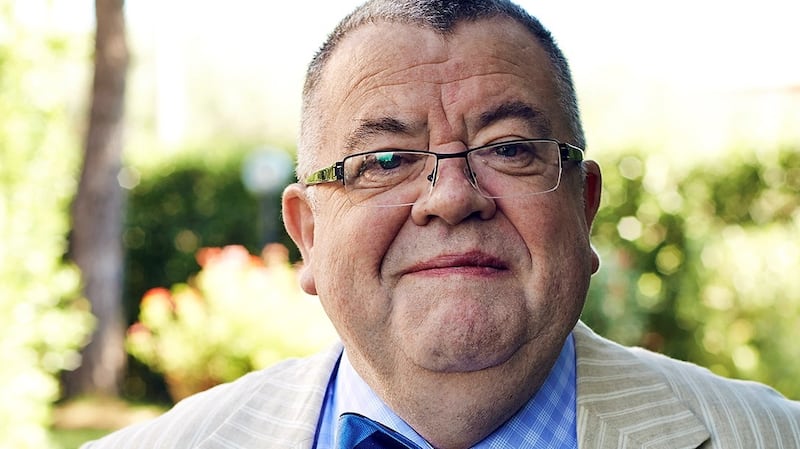The last months of the life of Gustav Mahler are interesting from an Irish perspective. Although we now remember Mahler primarily as a composer, he was also a major conductor, and had become principal conductor of the New York Philharmonic Orchestra in 1909. In February 1911 he conducted performances of Dubliner Charles Villiers Stanford’s Symphony No 3, the one subtitled Irish. Stanford’s work was also performed by other major US orchestras, in Chicago, Boston, Cleveland, Detroit and Houston. And it was Amsterdam’s Concertgebouw Orchestra that gave the 1903 world premiere of Stanford’s Second Irish Rhapsody, under its conductor Willem Mengelberg, to whom the piece was dedicated.
Stanford, who was born in Herbert Street in 1852 and died in London in 1924, was a major musical figure in his lifetime and is still known as the teacher of a generation of British composers – Gustav Holst, Ralph Vaughan Willians and Frank Bridge (teacher of Benjamin Britten), among them.
Musicologist Jeremy Dibble, a professor at Durham University, whose biography of Stanford was published in 2002 and who is giving two talks at Music For Galway's Stanford-focused Midwinter Festival, suggests the dimming of Stanford's profile in Ireland may have been politically influenced.
The composer was a staunch unionist whose views did not endear him to the cultural climate of the early years of the Irish Free State. And the area of repertoire in which he has had the most consistent success since his death is the choral music he wrote for use in the Anglican Communion.
Dibble’s view is supported by the fact that it was the Ulster Orchestra in Belfast which undertook the first ever recorded cycle of Stanford’s orchestral works in the 1980s, rather than an orchestra in the composer’s native city.

In my view he's the most gifted composer who's come out of Ireland, really
As Dibble put it to me, "He didn't fit the bill for the changing perspectives that were taking place in Ireland. It doesn't mean that he was completely neglected, because he wasn't. I think he's being increasingly appreciated now, over the last 20 years." And it was in Stanford's Second Piano Concerto of 1911 that Music for Galway's artistic director, Finghin Collins, made his BBC Proms debut in 2008. Two years later Collins went on to record the work for the Swiss label Claves with the RTÉ NSO under Kenneth Montgomery. And the RTÉ Vanburgh Quartet were also major advocates, in concert and on disc.

"This festival itself is quite a marker," says Dibble. "I would say it's one of the first times that Stanford's chamber music has really had a spotlight cast on it. In my view he's the most gifted composer who's come out of Ireland, really. You can point to others like Charles Wood, Hamilton Harty and, of course, there are a number of younger men, too, and younger women. But of that generation I think he's hugely important."
Stanford came from the privileged background of a legal family in Dublin and his great uncle Jonathan Henn was celebrated for the style of his defence of Daniel O’Connell in the 1843 repeal prosecutions. Apart from Stanford’s musical abilities, says Dibble, “He was able in at least two, possibly three European languages. He was extremely well travelled, and reached as far as modern-day Austria and eastern Poland.
"He knew what we would consider to be the canon of great composers of his time – Verdi, Brahms, Tchaikovsky, Saint-Saëns, Max Bruch, Arrigo Boito, Grieg, Dvorák. He corresponded with all of these people, and quite often in French or German. He knew everyone, the great performers of the time, and often wrote for them. He had a very international outlook. But he was also someone who wanted to make the case for what in those days was British music. He wanted to make the case for that on the continent, where he felt it was being rather neglected."
A lot of his actual musical style, especially the lyrical material, assimilates elements of Irish melody, in terms of its contour and rhythm and so on
England has long paid rather more attention to Stanford than Ireland, says Dibble. But now, he feels, “Ireland is wanting to claim Stanford rather more, as an Irish composer. I think that’s largely justified. He was absolutely proud of his origins. This is evident from his work on the Petrie collection, on the Irish traditional repertoire.”
But it goes a lot deeper than that, explains Dibble. “A lot of his actual musical style, especially the lyrical material, assimilates elements of Irish melody, in terms of its contour and rhythm and so on. You can see this in the symphonic music, the Irish Rhapsodies, which I think are really fine pieces. And you can see it in some of the chamber music. The slow movement of the Sixth String Quartet, for example – which the ConTempo Quartet will be playing in Galway – is clearly a very folk-like piece, without actually being based on a genuine folk tune.
“He does this a lot in his music. I think, actually, before pupils like Vaughan Williams, Holst and others started to do it in the early 20th century... if you listen to the last movement of the Irish Symphony, which was 1887, 1888, it sounds like another movement of the Vaughan Williams Folk Song Suite” – which, of course, was not written until the 1920s. “The way he uses the material, the use of modal harmony. All of these things at which Stanford was a master.”
In the United Kingdom, says Dibble, “Stanford’s music has always endured through the church music. Justifiably so. It’s incredibly original. In some ways nobody in the field of church music over the last hundred years has ever equalled the prowess, the intellectualism.”
He hones in on the matter of scale, the fact that Stanford was effectively writing “symphonic church music in what are small scale pieces. The whole point is, for a Magnificat in the liturgy you can’t write anything more than about five minutes before some clergyman is going to get irritable and say, that’s far too long. We must have something that’s short. And yet he manages to do this superbly, in his settings of the evening service and indeed other canticles within the Anglican liturgy.”
Dibble clearly regrets the way in which Stanford is so often remembered as "the teacher of... ". The catalogue of pupils, he says, "is almost endless. It goes on and on. He was teaching composition at the Royal College of Music from 1883 until around 1921." Stanford's pupils feature also in the Galway programmes — Samuel Coleridge Taylor (1875-1912), whose father was from Sierra Leone, William Hurlstone (1876-1906), the pupil Stanford himself thought the most highly of, Rebecca Clarke (1886-1979) and Muriel Herbert (1897-1984).
As a teacher, says Dibble, Stanford was always quick to find solutions to pupils’ compositional problems. But, “he was irascible, and quarrelsome, and quick to anger, then with a slow process of remorse afterwards. I think he was intellectually brilliant. But his reputation for much of the 20th century was as a teacher.”
Two pupils, Ralph Vaughan Williams and Herbert Howells, made BBC broadcasts about him in the 1950s, "both saying that his time was still coming". Dibble, who aided Finghin Collins with the planning and the provision of performance material, is clearly doing his utmost to bring that time into the present.
The Galway Midwinter Festival runs from Friday, January 21st, to Sunday, 23rd. See musicforgalway.ie



















